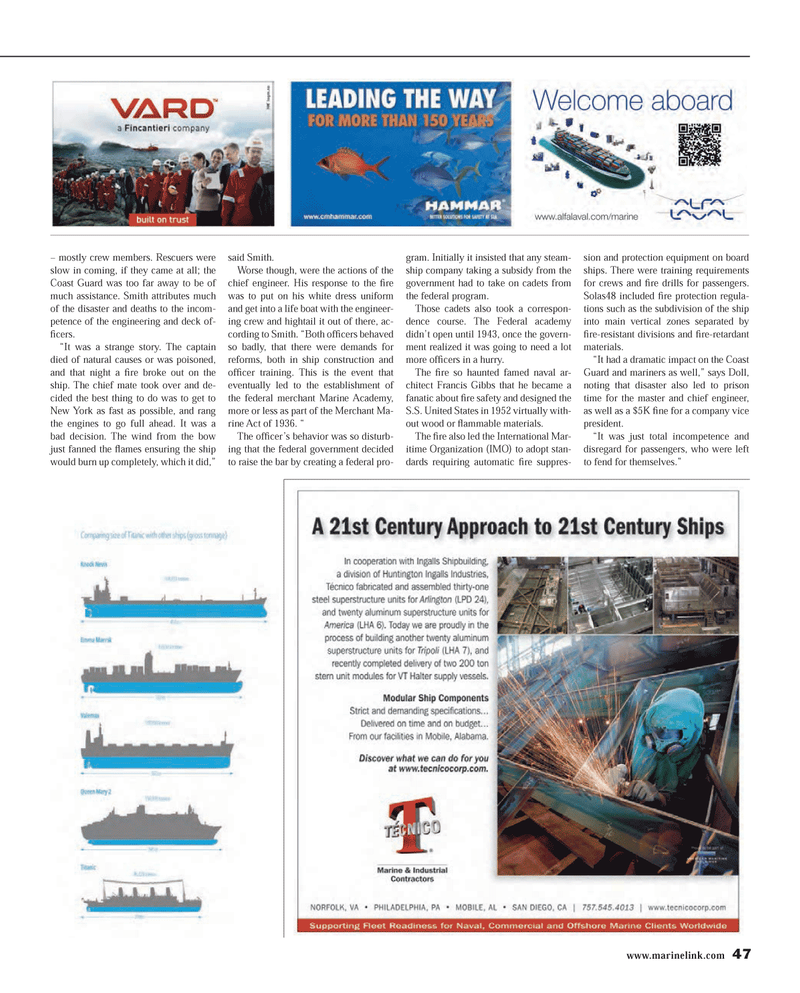
Page 47: of Maritime Reporter Magazine (June 2014)
Annual World Yearbook
Read this page in Pdf, Flash or Html5 edition of June 2014 Maritime Reporter Magazine
www.marinelink.com 47 – mostly crew members. Rescuers were slow in coming, if they came at all; the
Coast Guard was too far away to be of much assistance. Smith attributes much of the disaster and deaths to the incom- petence of the engineering and deck of- ? cers. “It was a strange story. The captain died of natural causes or was poisoned, and that night a ? re broke out on the ship. The chief mate took over and de- cided the best thing to do was to get to
New York as fast as possible, and rang the engines to go full ahead. It was a bad decision. The wind from the bow just fanned the ? ames ensuring the ship would burn up completely, which it did,” said Smith.
Worse though, were the actions of the chief engineer. His response to the ? re was to put on his white dress uniform and get into a life boat with the engineer- ing crew and hightail it out of there, ac- cording to Smith. “Both of? cers behaved so badly, that there were demands for reforms, both in ship construction and of? cer training. This is the event that eventually led to the establishment of the federal merchant Marine Academy, more or less as part of the Merchant Ma- rine Act of 1936. “
The of? cer’s behavior was so disturb- ing that the federal government decided to raise the bar by creating a federal pro- gram. Initially it insisted that any steam- ship company taking a subsidy from the government had to take on cadets from the federal program.
Those cadets also took a correspon- dence course. The Federal academy didn’t open until 1943, once the govern- ment realized it was going to need a lot more of? cers in a hurry.
The ? re so haunted famed naval ar- chitect Francis Gibbs that he became a fanatic about ? re safety and designed the
S.S. United States in 1952 virtually with- out wood or ? ammable materials.
The ? re also led the International Mar- itime Organization (IMO) to adopt stan- dards requiring automatic ? re suppres- sion and protection equipment on board ships. There were training requirements for crews and ? re drills for passengers.
Solas48 included ? re protection regula- tions such as the subdivision of the ship into main vertical zones separated by ? re-resistant divisions and ? re-retardant materials. “It had a dramatic impact on the Coast
Guard and mariners as well,” says Doll, noting that disaster also led to prison time for the master and chief engineer, as well as a $5K ? ne for a company vice president. “It was just total incompetence and disregard for passengers, who were left to fend for themselves.”
MR #6 (40-49).indd 47 6/4/2014 10:02:01 AM

 46
46

 48
48
